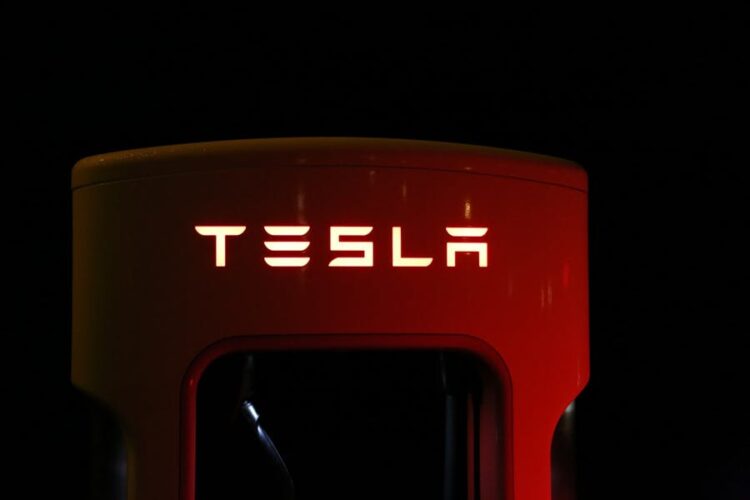Electric vehicles, led by industry trailblazer Tesla, have revolutionized the automotive landscape with promises of eco-friendliness, innovative technology, and lower operating costs. Central to the allure of owning a Tesla is free charging, which is a tempting prospect for prospective buyers. However, beneath the surface lies a complex web of factors determining the cost of charging a Tesla. In this article, we delve into the intricacies of Tesla’s charging infrastructure, dispel common myths surrounding free charging, and explore the various considerations that impact the cost of keeping a Tesla powered up.
Is it free to charge a Tesla?
No, charging a Tesla is not entirely free. While Tesla has offered free Supercharging as a promotional incentive in the past, this is no longer the case for most new Tesla purchases. Owners now typically pay for Supercharging on a per-use basis or through a subscription plan. Additionally, charging at home using a Tesla Wall Connector or other charging options incurs electricity costs, albeit typically lower than traditional fueling expenses. However, despite these costs, the overall operational savings of owning a Tesla compared to a traditional combustion engine vehicle can still be substantial, offering a bright financial future for Tesla owners.
Understanding Tesla Charging Options
Tesla offers a range of charging options, empowering its drivers to choose what suits their needs best, whether they’re at home, on the road, or at destination points. Here’s a detailed overview:
Tesla’s Supercharger network, strategically located along highways and major travel routes, is a testament to the brand’s commitment to convenience. Equipped with high-speed chargers, these stations can provide significant range in a short amount of time, making them ideal for road trips and travel between cities. While Supercharging is not typically free anymore, it remains a convenient and efficient option for topping up the battery while on the go, ensuring that your journey is never interrupted.
Unlike Superchargers, destination chargers are often found at hotels, restaurants, shopping centers, and other destinations where Tesla owners may spend extended periods. These chargers are slower than Superchargers but are intended for overnight stays or extended stops, allowing Tesla owners to charge their vehicles conveniently while going about their activities.
Tesla provides several home charging solutions for daily charging needs. The Tesla Wall Connector is a high-power charging solution that can be installed in a garage or outdoor location, providing faster charging speeds compared to standard outlets. Additionally, Tesla owners can use a NEMA 14-50 outlet or even a standard household outlet with the included Mobile Connector for slower but still effective charging at home.
While charging at home using residential electricity typically incurs lower costs than Supercharging, the specific rates may vary depending on location, utility provider, and time of use. On the other hand, supercharging often involves a per-use fee or subscription plan, with pricing varying based on factors like location and charging speed.
Public Charging Networks: Costs Beyond Tesla’s Network
While Tesla’s proprietary Supercharger network offers convenience and efficiency for Tesla owners, alternative public charging networks are available that cater to a broader range of electric vehicles (EVs). Understanding the costs associated with these networks beyond Tesla’s infrastructure is crucial for EV drivers seeking charging options beyond their home or Tesla-specific solutions.
Public Charging Providers:
Numerous companies operate public charging networks, such as ChargePoint, EVgo, and Electrify America. These networks often feature charging stations in public parking lots, shopping centers, rest stops, and other accessible locations.
Charging Costs:
Unlike Tesla’s Supercharger network, which typically charges per use or subscription, public charging networks may have varying pricing models. Common structures include pay-per-session, per kWh, or membership-based plans with discounted rates. Prices can vary widely depending on factors such as location, charging speed, and network provider.
Interoperability and Compatibility:
While Tesla vehicles can only use Tesla’s proprietary Supercharger network without adapters, many public charging networks offer compatibility with a broader range of EVs, including Tesla models. However, it’s essential for Tesla owners to check compatibility and any additional adapter requirements before using non-Tesla charging stations.
Access and Availability:
Public charging networks provide additional flexibility for EV owners, particularly those without access to home charging solutions or traveling outside Tesla’s Supercharger coverage area. However, the availability of public charging stations can vary depending on geographic location and demand, with potential wait times during peak periods.
Considerations for Tesla Owners:
While Tesla’s Supercharger network remains a convenient option for many drivers, utilizing public charging networks can be advantageous for extending range, accessing charging stations in remote areas, or during peak travel times. Understanding the costs, compatibility, and availability of public charging networks can help Tesla owners effectively plan their charging strategies for various driving scenarios.
Strategies For Minimizing Charging Costs
As electric vehicle (EV) ownership becomes more widespread, minimizing charging costs is a priority for many drivers. Whether you own a Tesla or another EV, several strategies can help you save money on charging expenses:
Maximizing Home Charging Efficiency: Charging your EV at home is typically the most cost-effective option. To maximize efficiency, consider installing a Level 2 charging station, such as the Tesla Wall Connector, which can provide faster charging speeds than standard household outlets. Additionally, take advantage of off-peak electricity rates by scheduling charging during low-demand hours, typically late at night or early in the morning.
Utilizing Tesla’s Supercharger Network Wisely: While convenient for long-distance travel, using Tesla’s Supercharger network exclusively for all charging needs can become costly. Reserve Supercharger usage when necessary, such as during road trips or when you cannot charge at home. For daily charging, prioritize using home charging solutions or public charging networks with lower rates.
Taking Advantage of Promotions and Incentives: Look for promotions, discounts, and incentives offered by Tesla or other charging providers. Tesla occasionally offers free Supercharging miles for referral programs or special promotions. Additionally, some utility companies offer rebates or incentives for installing EV charging equipment at home, helping offset installation costs and encouraging more efficient charging practices.
Community Charging: Consider joining or forming local EV charging cooperatives or sharing networks. By sharing charging resources with other EV owners, you can collectively reduce costs and optimize charging schedules. Community charging initiatives can also foster a sense of camaraderie among EV enthusiasts while promoting sustainable transportation practices.
Final Words
In the rapidly evolving landscape of electric vehicle ownership, understanding the nuances of charging costs is essential for maximizing efficiency and minimizing expenses. While charging a Tesla may not be entirely free, strategic planning and using available charging options can significantly reduce costs. Whether it’s leveraging home charging solutions, utilizing Tesla’s Supercharger network judiciously, or taking advantage of promotions and community initiatives, there are numerous avenues for EV owners to optimize their charging experiences. By embracing these strategies and staying informed about advancements in EV charging technology and policy, drivers can confidently navigate the transition to electric transportation, knowing they’re saving money and contributing to a cleaner, more sustainable future.
FAQ’s
Can I charge my Tesla at a public charging station?
Yes, Tesla vehicles can charge at public charging stations, including those operated by third-party providers like ChargePoint, EVgo, and Electrify America. However, compatibility and charging costs may vary depending on the station and network.
How long does it take to charge a Tesla at a Supercharger?
A: The time it takes to charge a Tesla at a Supercharger depends on the vehicle model, battery size, current charge level, and charging speed. Superchargers can provide a significant range boost for specific Tesla models in as little as 15-30 minutes
Are there any incentives for buying a Tesla?
A: In some regions, there may be incentives such as tax credits, rebates, or grants available for purchasing a Tesla or other electric vehicles. These incentives vary by location and may be subject to eligibility criteria and program limitations.







